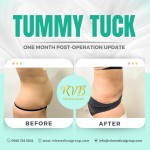Tummy Tuck in the Philippines

What is Tummy Tuck?
A flat and well-toned abdomen is something many of us strive for through exercise and weight control. Sometimes these methods cannot achieve our goals.
Even individuals of otherwise normal body weight and proportion can develop an abdomen that protrudes or is loose and sagging. The most common causes of this include:
- Aging
- Heredity
- Multiple Pregnancy
- Prior abdominal surgery
- Massive weight loss
Candidates
In general, you may be a good tummy tuck candidate if:
- You are physically healthy and at a stable weight
- You have realistic expectations
- You are a nonsmoker
- You are bothered by the appearance of your abdomen
Consultation
- Your surgical goals
- Medical conditions, drug allergies and medical treatments
- Current medications, vitamins, herbal supplements, alcohol, tobacco and drug use
- Previous surgeries
Your tummy tuck surgeon will also:
- Evaluate your general health status and any pre-existing health conditions or risk factors
- Take photographs
- Discuss your options
- Recommend a course of treatment
- Discuss likely outcomes of the tummy tuck and any risks or potential complication
The success and safety of your tummy tuck procedure depends very much on your complete candidness during your consultation. You’ll be asked a number of questions about your health, desires and lifestyle.
The consultation is the time to ask your cosmetic surgeon questions.
It’s very important to understand all aspects of your tummy tuck procedure. It’s natural to feel some anxiety, whether it’s excitement for your anticipated new look or a bit of preoperative stress. Don’t be shy about discussing these feelings with your plastic surgeon.
Risks and Safety
You will be asked to sign consent forms to ensure that you fully understand the procedure and any risks.
Tummy tuck risks include:
- Anesthesia risks
- Bleeding
- Infection
- Seroma (Fluid accumulation )
- Poor wound healing
- Skin loss
- Numbness or other changes in skin sensation
- Skin discoloration and/or prolonged swelling
- Unfavorable scarring
- Recurrent looseness of skin
- Fat Necrosis
- Deep vein thrombosis, cardiac and pulmonary complications
- Asymmetry
- Suboptimal aesthetic result
- Possibility of revisional surgery
- Persistent pain
These risks and others will be fully discussed prior to your consent. It’s important that you address all your questions directly with your cosmetic surgeon.
Preparation
- Get lab testing or a medical evaluation
- Take certain medications or adjust your current medications
- Stop smoking
- Avoid taking aspirin, anti-inflammatory drugs and herbal supplements as they can increase bleeding
A tummy tuck may be performed in an accredited office-based surgical facility, licensed ambulatory surgical center or a hospital.
If your tummy tuck is performed on an outpatient basis, be sure to arrange for someone to drive you to and from surgery and to stay with you for at least the first night following surgery.
Procedure
A tummy tuck procedure includes the following steps:
Step 1 – Anesthesia
Medications are administered for your comfort during the surgical procedures. The choices include intravenous sedation and general anesthesia. Your doctor will recommend the best choice for you.
Step 2 – The incision
A full tummy tuck requires a horizontally-oriented incision in the area between the pubic hairline and belly button.
The shape and length of the incision will be determined by the amount of excess skin. Once the abdominal skin is lifted, the underlying weakened abdominal muscles are repaired.
A second incision around the navel may be necessary to remove excess skin in the upper abdomen.
The upper abdominal skin is pulled down like a window shade. The excess skin is trimmed and the remaining skin is sutured together. A new opening for the belly button is created. The belly button is popped through to the surface and sutured into position.
Step 3 – Wound Closure
Sutures, skin adhesives, tapes or clips close the skin incisions.
Recovery
Small, thin tubes may be temporarily placed under the skin to drain any excess blood or fluid that may collect.
You will be given specific instructions that may include:
- How to care for the surgical site and drains
- Medications to apply or take orally to aid healing and reduce the potential for infection
- Specific concerns to look for at the surgical site or in your general health
- When to follow up with your plastic surgeon
Be sure to ask your tummy tuck surgeon specific questions about what you can expect during your individual recovery period:
- Where will I be taken after my surgery is complete?
- What medication will I be given or prescribed after surgery?
- Will I have dressings/bandages after surgery? When will they be removed?
- When will the stitches be removed?
- How will I bathe?
- How long will I wear the pressure garment?
- When can I resume normal activity and exercise?
- When do I return for follow-up care?
Results
What to Expect in Tummy Tuck
Your tummy tuck will result in a flatter, firmer abdominal contour that is more proportionate withY your body type and weight . The final results of tummy tuck surgery may be initially obscured by swelling and your inability to stand fully upright until internal healing is complete.
Within a week or two, you should be standing tall and confident in your new slimmer profile. Your tummy tuck will result in a flatter, firmer abdominal contour that is more proportionate with your body type and weight. Previous abdominal surgery may limit the potential results of a tummy tuck. In women who have undergone cesarean section, the existing scars may be incorporated into the new scar.
The tummy tuck scar may take several months to a year to fade as much as it will. Although good results are expected from your procedure, there is no guarantee. In some situations, it may not be possible to achieve optimal results with a single surgical procedure and another surgery may be necessary. Following your physician’s instructions is essential to the success of your surgery.
It’s important that the surgical incisions are not subjected to excessive force, swelling, abrasion or motion during the time of healing. Your doctor will give you specific instructions on
Before and After Pictures



